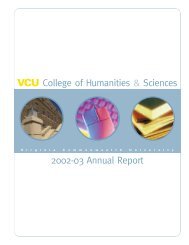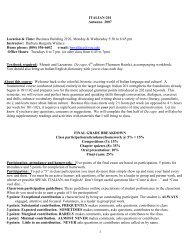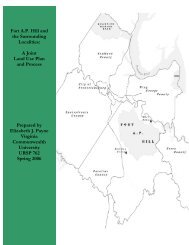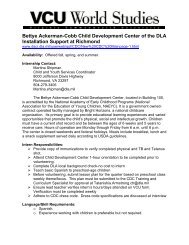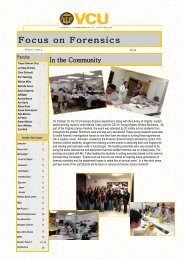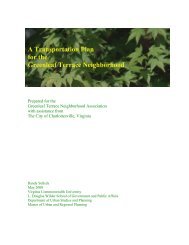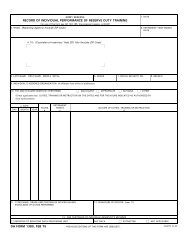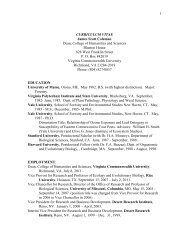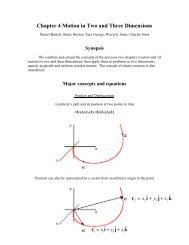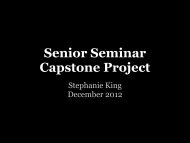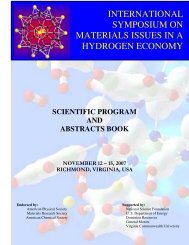Downtown Suffolk Revitalization Plan through Arts - College of ...
Downtown Suffolk Revitalization Plan through Arts - College of ...
Downtown Suffolk Revitalization Plan through Arts - College of ...
Create successful ePaper yourself
Turn your PDF publications into a flip-book with our unique Google optimized e-Paper software.
Table 27 – Musical Play participation 1990<br />
57<br />
Musical Play 1990<br />
Population<br />
Participation<br />
rate<br />
Total<br />
Participation<br />
Less than 9th grade 5908 6.0% 354<br />
9th to 12th grade, no diploma 6214 12.6% 783<br />
High school graduate (includes equivalency) 9380 15.7% 1473<br />
Some college, no degree 6302 28.4% 1790<br />
Associate degree 1663 28.4% 472<br />
Bachelor's degree 2908 43.6% 1268<br />
Graduate or pr<strong>of</strong>essional degree 1209 50.3% 608<br />
Total 33584 6748<br />
These final numbers can be compared to the total populations over 25, resulting<br />
in a final percentage <strong>of</strong> the population that has participated in that particular art form. As<br />
the population increased, it is natural that the total participation should increase as well.<br />
What is significant is that the total participation rate increased as well, from 20% to 23%<br />
<strong>of</strong> the total population, as illustrated in Table 28. This suggests that while the population<br />
is growing, participation is actually growing a bit faster, mainly as a result from the<br />
increasing education levels.<br />
Table 28 – 1990 and 2000 participation levels<br />
Musical Play 1990 2000<br />
Total population 52141 63677<br />
Total above 25 33584 41662<br />
Participation Number 6748 9742<br />
Participation Percent 20.1% 23.4%<br />
Using this method, Census tract 751 and 754 is predicted to have the highest total<br />
participation in total numbers, while tracts 751 and 753 is predicted to have the highest<br />
participation by percentage <strong>of</strong> residents. Census tracts 651 and 655 are predicted to have<br />
the lowest participation in total numbers, while tracts 654 and 655 are predicted to have<br />
the lowest participation by percentage <strong>of</strong> residents. Extra effort will be needed to<br />
encourage participation in thee tracts.<br />
Appendix C, located at the end <strong>of</strong> the document, reports participation levels using<br />
2000 census numbers filtered <strong>through</strong> the 1997 participation numbers for both income<br />
and education. It should be mentioned that the rate <strong>of</strong> participation does change over<br />
time, and there would be slight changes in participation rates between 1990 and 2000.<br />
These participation numbers can be used to illustrate the level <strong>of</strong> arts in the community<br />
and can serve as a guide for programming.<br />
To conclude, these statistics are national standards, reflecting general<br />
participation in the arts. It can be argued that the participation will occur at different




